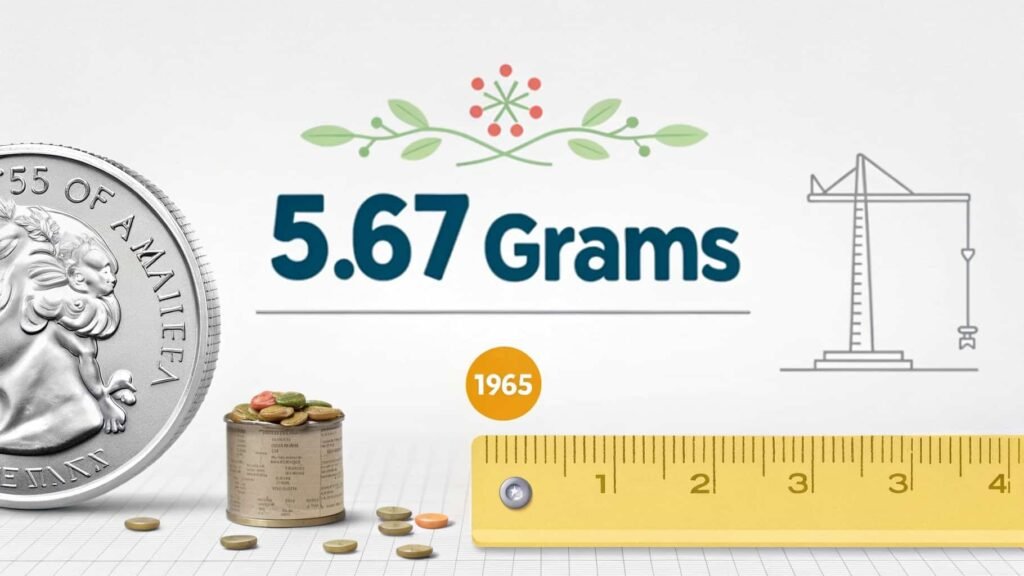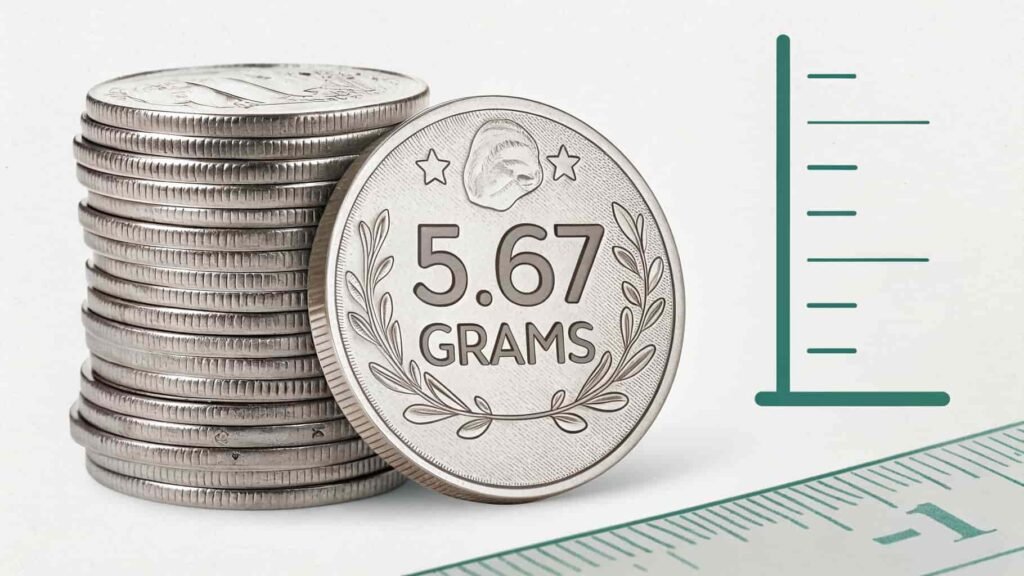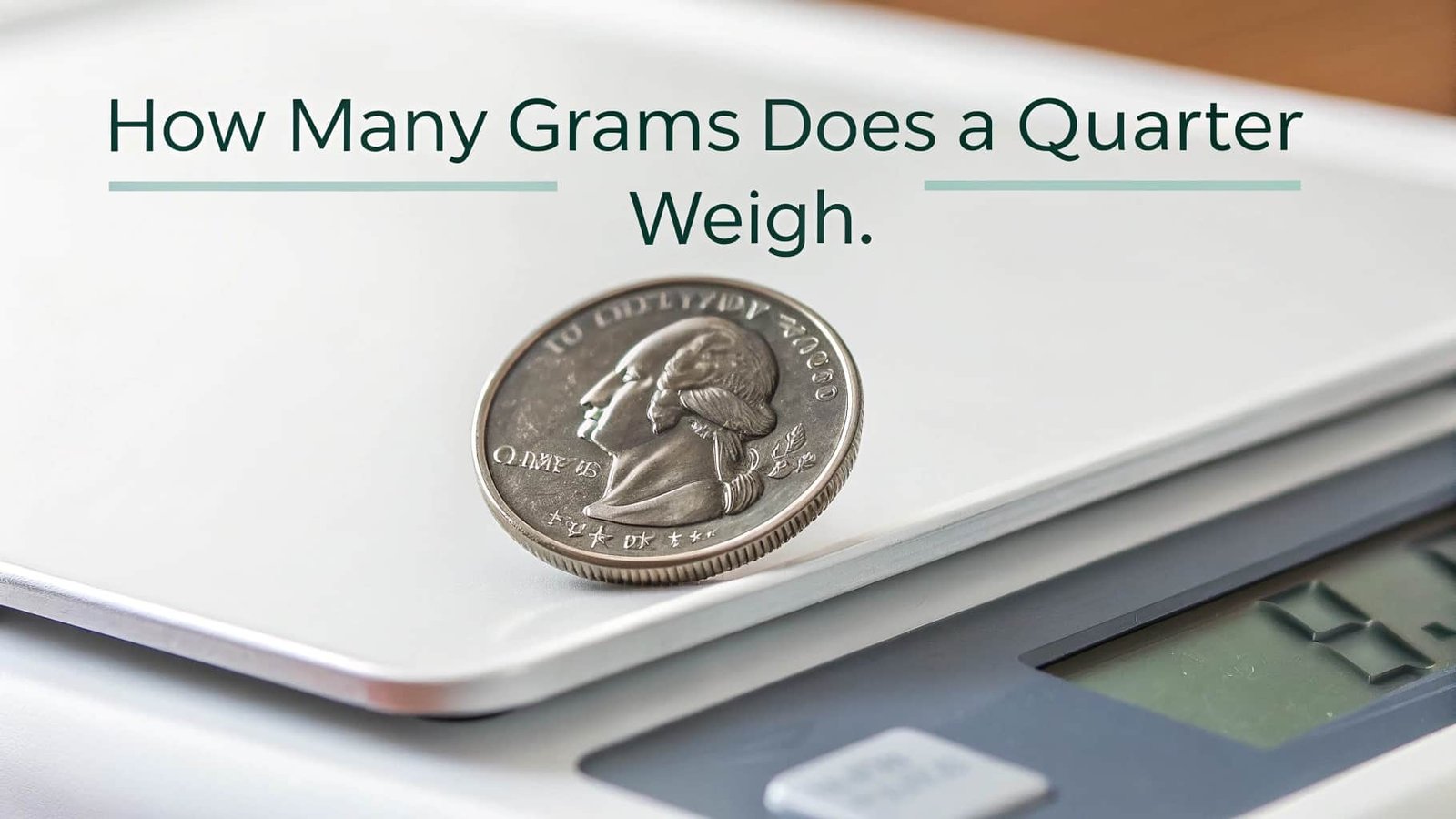Ever found yourself holding a quarter and wondering, “How many grams does a quarter weigh?” Whether you’re counting change, shipping items, or just curious about U.S. coins, knowing the precise weight of a quarter can actually be more useful than you’d think. This article explores everything from the exact weight of a U.S. quarter to how it has changed over time, its materials, and how its weight compares with other coins. Let’s dive deep into the details.
What Is a U.S. Quarter?
Before answering the big question, how many grams does a quarter weigh? It’s important to understand what exactly a quarter is. A U.S. quarter is a coin worth 25 cents, or one-fourth of a U.S. dollar. It’s commonly used in daily transactions and has been a part of American currency since the late 1700s.
The quarter is one of the most recognizable and frequently used coins in the United States. It’s made by the United States Mint and features changing reverse designs, especially under programs like the 50 State Quarters and America the Beautiful series.
How Many Grams Does a Quarter Weigh? — The Straight Answer
Let’s get to the main point. The standard U.S. quarter weighs exactly 5.67 grams.

This applies to the modern quarters minted since 1965. These coins are made from a cupronickel composition (a mix of copper and nickel) and are used in everyday currency.
So, if you’re measuring quarters for a science project, coin collection, or postage scale, the number to remember is 5.67 grams.
Historical Weights of Quarters Over Time
Interestingly, the weight of a quarter hasn’t always been the same. In fact, the material composition and weight have evolved since the first quarter was introduced in 1796.
Pre-1965 Quarters
- Weight: 6.25 grams
- Composition: 90% silver, 10% copper
These older quarters, often called silver quarters, are now highly collectible and carry more value than face value due to their silver content.
Post-1965 Quarters
- Weight: 5.67 grams
- Composition: 91.67% copper, 8.33% nickel (layered over a pure copper core)
The switch from silver to cupronickel occurred as a result of rising silver prices and the Coinage Act of 1965.
Why Did the Weight of Quarters Change?
In 1965, Congress passed the Coinage Act to address the rising cost of silver. Up until then, quarters were primarily composed of silver, which became too expensive to justify in general circulation.
As a result:
- The U.S. Mint transitioned to a more affordable and durable cupronickel alloy.
- This change reduced the weight of the quarter from 6.25 grams to 5.67 grams, which is the standard weight today.
This move not only preserved coin production costs but also ensured the coins remained practical for daily use.
How Is the Weight of a Quarter Measured?
The U.S. Mint uses high-precision machines to manufacture and weigh each quarter. The process ensures that all coins are consistent in both size and weight. If you were to weigh a modern quarter using a digital scale, it should read 5.67 grams, assuming the coin hasn’t been excessively worn down from use.
Some collectors even use these scales to detect fakes or determine the condition of old coins.
What Materials Make Up a Quarter?
Modern U.S. quarters are not made of solid silver or solid nickel. Instead, they’re clad coins, meaning they have layers of metal:
- Outer layers: 75% copper and 25% nickel
- Core: 100% pure copper
This combination gives the coin its durability and familiar silverish appearance while keeping production costs low.
Why Is Coin Weight Important?
Knowing how many grams a quarter weighs is more than just trivia; it has real-world applications. Here are a few examples:

- Coin collectors use weight to verify authenticity.
- Vending machines rely on coin weight for validation.
- Postal services may use quarters as a rough weight reference.
- Teachers and students use them in science or math experiments.
- Precious metal dealers use weight to identify silver quarters from modern ones.
So, whether you’re collecting, measuring, or verifying coins, quarter weight matters.
How Does a Quarter Compare to Other U.S. Coins?
Let’s compare the standard quarter to other common U.S. coins in terms of weight:
| Coin | Value | Weight (grams) |
| Penny | $0.01 | 2.5 g |
| Nickel | $0.05 | 5.0 g |
| Dime | $0.10 | 2.268 g |
| Quarter | $0.25 | 5.67 g |
| Half Dollar | $0.50 | 11.34 g |
| Dollar Coin | $1.00 | 8.1 g |
From this, you can see the quarter is heavier than both the penny and dime, but lighter than the half dollar and dollar coin.
Can Quarters Lose Weight Over Time?
Yes, quarters can lose tiny amounts of weight due to natural wear and tear. Coins that have been in circulation for decades may weigh slightly less than new ones.
However, unless a coin is badly damaged or extremely worn, the change is usually small, just a fraction of a gram, and not enough to interfere with vending machines or scale-based measurements.
Collectors typically consider a loss in weight as part of the grading process when evaluating coin condition.
Are There Heavier or Special Edition Quarters?
Although most quarters weigh 5.67 grams, proof coins or commemorative editions made for collectors might vary slightly in weight depending on how they’re struck or what materials they contain.
For example:
- Silver Proof Quarters (made of 90% silver) weigh 6.25 grams
- Collector Sets might include special finishes or metals, slightly altering weight
These coins are generally not used in daily transactions but are popular among numismatists.
Can the Weight of a Quarter Help Spot a Fake?
Absolutely. If a coin doesn’t weigh what it should, it could be fake or altered. Counterfeit quarters often:
- Are too light (due to cheaper materials)
- Are too heavy (metal-filled fakes)
- Don’t have the proper thickness or edge reeding
Weighing a suspect quarter can be a quick way to flag a problem. When in doubt, compare it to a verified quarter of the same year.
Common Misconceptions About Quarter Weight
There are several myths or misunderstandings when it comes to how many grams does a quarter weigh:
“All quarters weigh the same.”
Not true. Modern quarters (post-1965) weigh 5.67 grams, but pre-1965 silver quarters weigh 6.25 grams.
“The weight of a quarter can be used to measure ounces.”
Only partially true. Since 1 ounce = 28.35 grams, it would take about 5 quarters to roughly equal 1 ounce in weight.
“Damaged quarters weigh the same.”
In reality, bent or worn quarters can weigh slightly less than standard.
Conclusion: Why Quarter Weight Matters
So, now that we’ve answered the big question, how many grams does a quarter weigh? It’s clear that this simple coin carries more than just monetary value. At 5.67 grams, the modern quarter serves as a reliable, standardized tool for daily transactions, historical insights, and practical applications in various industries.
Whether you’re a coin collector, student, or just someone curious about U.S. currency, understanding the weight of a quarter in grams adds another layer to how we view and use money. And for those handling coins regularly, even this small amount of information can make a big difference.
Frequently Asked Questions (FAQs)
How many quarters make up 100 grams?
Since one quarter weighs 5.67 grams, you would need about 18 quarters to make up 100 grams (100 ÷ 5.67 ≈ 17.63).
How much does a roll of quarters weigh in grams?
A standard roll contains 40 quarters.
So, 40 × 5.67 = 226.8 grams.
Do older quarters weigh more than new ones?
Yes. Quarters minted before 1965 contain silver and weigh 6.25 grams, compared to the modern 5.67 grams.
Can I use a quarter to calibrate my scale?
You can use quarters as a rough reference, but for true calibration, it’s better to use official calibration weights. Still, if your scale reads close to 5.67 grams for a quarter, it’s probably accurate.
Are Canadian quarters the same weight as U.S. quarters?
No. Canadian quarters typically weigh 4.4 grams, which is less than their U.S. counterparts.
How many quarters equal one pound in weight?
1 pound = 453.592 grams
453.592 ÷ 5.67 = about 80 quarters per pound


No responses yet